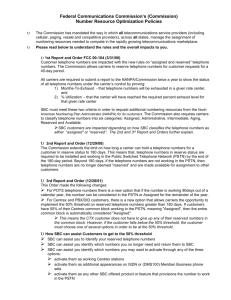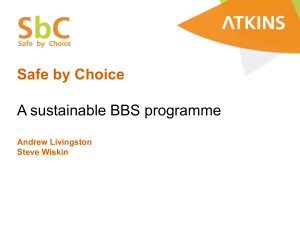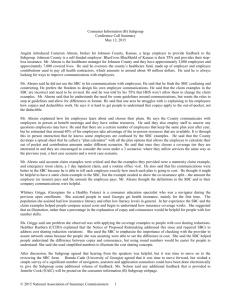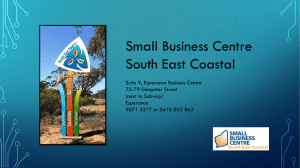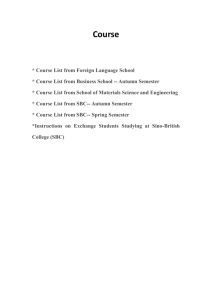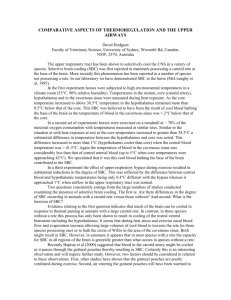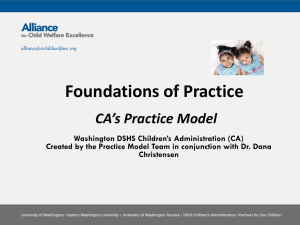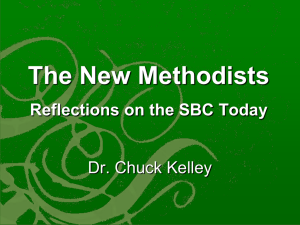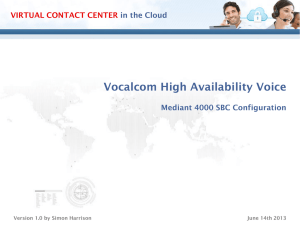The SBC Foundation:
advertisement
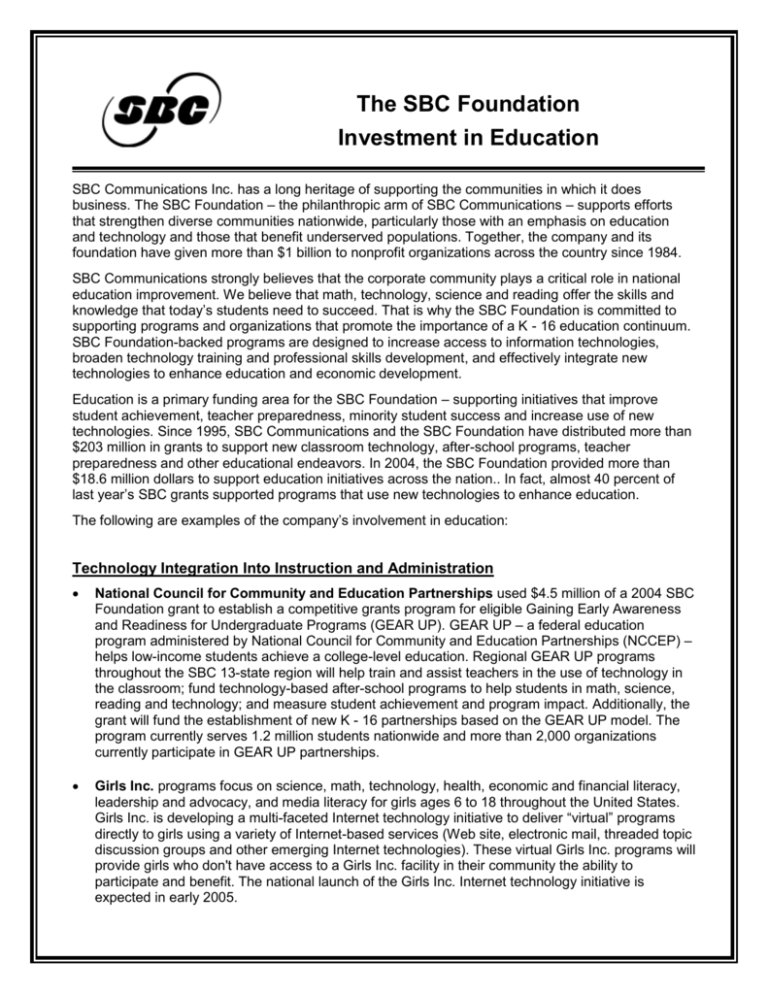
The SBC Foundation Investment in Education SBC Communications Inc. has a long heritage of supporting the communities in which it does business. The SBC Foundation – the philanthropic arm of SBC Communications – supports efforts that strengthen diverse communities nationwide, particularly those with an emphasis on education and technology and those that benefit underserved populations. Together, the company and its foundation have given more than $1 billion to nonprofit organizations across the country since 1984. SBC Communications strongly believes that the corporate community plays a critical role in national education improvement. We believe that math, technology, science and reading offer the skills and knowledge that today’s students need to succeed. That is why the SBC Foundation is committed to supporting programs and organizations that promote the importance of a K - 16 education continuum. SBC Foundation-backed programs are designed to increase access to information technologies, broaden technology training and professional skills development, and effectively integrate new technologies to enhance education and economic development. Education is a primary funding area for the SBC Foundation – supporting initiatives that improve student achievement, teacher preparedness, minority student success and increase use of new technologies. Since 1995, SBC Communications and the SBC Foundation have distributed more than $203 million in grants to support new classroom technology, after-school programs, teacher preparedness and other educational endeavors. In 2004, the SBC Foundation provided more than $18.6 million dollars to support education initiatives across the nation.. In fact, almost 40 percent of last year’s SBC grants supported programs that use new technologies to enhance education. The following are examples of the company’s involvement in education: Technology Integration Into Instruction and Administration National Council for Community and Education Partnerships used $4.5 million of a 2004 SBC Foundation grant to establish a competitive grants program for eligible Gaining Early Awareness and Readiness for Undergraduate Programs (GEAR UP). GEAR UP – a federal education program administered by National Council for Community and Education Partnerships (NCCEP) – helps low-income students achieve a college-level education. Regional GEAR UP programs throughout the SBC 13-state region will help train and assist teachers in the use of technology in the classroom; fund technology-based after-school programs to help students in math, science, reading and technology; and measure student achievement and program impact. Additionally, the grant will fund the establishment of new K - 16 partnerships based on the GEAR UP model. The program currently serves 1.2 million students nationwide and more than 2,000 organizations currently participate in GEAR UP partnerships. Girls Inc. programs focus on science, math, technology, health, economic and financial literacy, leadership and advocacy, and media literacy for girls ages 6 to 18 throughout the United States. Girls Inc. is developing a multi-faceted Internet technology initiative to deliver “virtual” programs directly to girls using a variety of Internet-based services (Web site, electronic mail, threaded topic discussion groups and other emerging Internet technologies). These virtual Girls Inc. programs will provide girls who don't have access to a Girls Inc. facility in their community the ability to participate and benefit. The national launch of the Girls Inc. Internet technology initiative is expected in early 2005. Technology Curriculum Development and Diversity The Community Technology Program is held at the Bradley School of Technology and Trade (within the Milwaukee public school system), and is the first of its kind in the state to benefit both at-risk students and the community. The program allows youth to go directly into a job or to go on to a two-year technical school or four-year college. The program and facility is critical to the community as a resource that can be used for meetings, seminars, workshops, distance learning programs, job training and recruitment. It is also a location for innovative additional programming with organizations such as the National Council of La Raza, Urban League and the Executive Leadership Council. AMISTAD America is a national nonprofit organization that promotes racial harmony through the operation of Freedom Schooner Amistad, to educate students about The Amistad Incident of 1839. A recreation of the historic trade ship, La Amistad, the Freedom Schooner travels to national and international ports delivering a message of racial reconciliation, perseverance, cooperation and justice. Through the SBC Foundation funding, K - 12 educators can gain access to the AMISTAD America curriculum via the Internet. The grant also supports the direct Internet communication between the captain and crew of Amistad to students on land. Technology Workforce Development The University of Dallas’ Triad Education Model is an experiential, technology-based, interactive program which integrates math and science curriculum, provides access and opportunity to students and schools in underserved communities and supports teacher training and education. Triad is designed to respond to the critical need for identifying, recruiting, educating and retaining students who may otherwise be missed through the educational system. It is recognized that access to math and science curriculum must be made available to all students to enable the best and brightest to consider professions where math and science skills can be maximized and benefit a wider community. The Oklahoma Engineering Foundation (OEF) sponsors statewide programs to encourage student competency and interest in mathematics and science. Educational programs such as Mathcounts, the annual OEF Engineering Fair, The Future City and TEAMS competitions, along with scholarship assistance, are administered and coordinated by OEF and the Oklahoma Society of Professional Engineers. More than 7,000 Oklahoma students and educators participate in the Mathcounts and Engineering Fair. By exposing students in middle, junior high and high school to the vast variety of careers available in these professions, OEF expects to see an increase in the number of students pursuing engineering or technology careers. Diverse Technology Workforce Development Michigan Women’s Foundation encourages middle school girls to enter the fields of technology, math and science. Based on extensive research, the organization created a Web site that appeals to the target group by using young and creative role models, providing career development programs and promoting local events of interest. The site uses surveys to learn about the interests and needs of middle school girls. The information is shared with middle school teachers across the state. The program is a unique collaboration between the Michigan Women’s Foundation, the Girl Scouts, the American Association of University Women, the Michigan Women’s Commission, and the Athena and Nolomis Foundations. Tomas Rivera Policy Institute supports the widespread dissemination of a study investigating contributing factors underlying the low representation of Hispanics in the Information Technology workforce. The project examines various factors influencing the low representation of Latinos in IT jobs, career paths, and appropriate educational experiences. The SBC Foundation is a private foundation, funded by SBC Communications, Inc.
